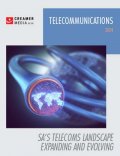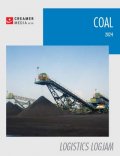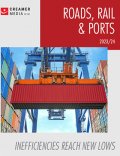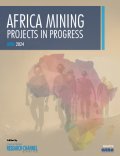|
SELECT a_id, a_id_word, a_headline, a_publish_date, a_abstract, a_author, a_has_video, a_has_audio FROM su_cat_sg_mappings, re_categories , re_category_sections_assoc , pr_sections , pr_article_section_assoc , pr_articles_search, pr_article_media_assoc WHERE csg_sg_id = 1 AND csg_cat_id = cat_id AND a_status = 1
AND a_process_status = 4 AND a_expiry_date >= 1732183200
AND cat_id = scat_cat_id AND scat_s_id = s_id AND s_id = ase_s_id AND ase_a_id = a_id
AND cat_re_id = 42 AND ama_a_id = a_id AND ama_mt_id = 2 AND ama_p_id = ase_p_id AND s_id NOT IN (14903,14910,14911,14906,14904,14912,14909,14908,14907,14905) AND a_publish_date <= 1732183200 AND ase_s_id IN (14889,14891,14892,14893,14894,14895,15673,14896,14897,14898,14899,14900) GROUP BY a_id ORDER BY a_publish_date DESC LIMIT 0, 100
|
 |
Water 2023: South Africa’s looming crisis
 Published: 06 Oct 23
Without significant changes in how water is managed, South Africa’s forecasted water deficit of 1.60-billion to 2.70-billion cubic metres by 2030 will continue increasing, impacting on investment, job creation and economic growth.
The National Infrastructure Plan 2050, published in March 2022, warns that addressing South Africa’s water management challenges will get ever-more challenging owing to growing water demand driven by economic growth, urbanisation and rising standards of living, suggesting a need to broaden South Africa’s water mix.
Creamer Media’s ‘Water 2023: South Africa’s looming crisis’ report considers these challenges in the context of the global state of water resources, focusing on the country’s water regulations, policies and planning. It examines some of the country’s most pressing issues, including supply and demand; the Blue, Green and No Drop reports, which monitor wastewater quality, drinking water quality and the status of water losses and nonrevenue water respectively; and the failure of local water services. The report also considers the financial health of the water sector and the impacts thereof. The report also looks at some of the water and sanitation projects that are under way that might help deal with South Africa’s dire water situation.
|
|
 |
Real Economy Yearbook 2023
Published: 01 Sep 23
Loadshedding continues to cast a confidence-sapping pall across South Africa’s real economy, which is lso being weighed down by a series of other infrastructure failures, from water to rail. Focusing on the electricity crisis – which remains the biggest risk to growth and development even though other threats are rising – appears to be yielding some results, albeit insufficient in speed and scale to fully address the crisis.
Nevertheless, there is still a long way to go, with South Africa’s public procurement of new generation continuing to underdeliver.
However, the pressure on the real economy does not start and end with power, or the lack thereof.
Creamer Media’s ‘Real Economy Yearbook 2023’ reflects on the lack of sustainable progress in building capacity in the public sector, the ability of the country to build resilience against further crises, along with South Africa’s appeal as an attractive investment option.
|
Real Economy Yearbook 2023
|
 |
Steel 2023: Building a sustainable future
 Published: 15 Jun 23
Creamer Media’s Steel 2023 Report examines the global steel market over the past 12 months and provides insight on South Africa’s steel sector in particular, including production and demand, government support and the scrap metal sector, as well as decarbonisation efforts in the steel sector. It also provides an overview of the main producers in South Africa, as well as an overview of the global and local stainless steel markets.
|
|
 |
Projects in Progress 2023 (First Edition)
Published: 26 May 23
Creamer Media’s 'Projects in Progress 2023' supplement considers some of the major project developments under way, including high-profile electricity, hydrogen, industry, petrochemicals and gas, as well as water projects in the engineering sector. The supplement also includes some mining projects in the coal, diamonds, gold and platinum sector, as well as a few of the lower-profile public and private developments. What remains apparent is that the private-sector pipeline for projects remains especially weak, owing to poor levels of investor confidence. Nevertheless, project activity is continuing across most of the mining subsectors and in some pockets of industry.
|
|
 |
Battery Metals 2023: Powering the green economy
 Published: 17 May 23
The clean energy transition has unleashed unprecedented demand for key minerals and metals. Lithium, nickel, cobalt, manganese and graphite are crucial to battery performance, longevity and energy density. Rare-earth elements are essential for permanent magnets used in wind turbines and electric vehicle (EV) motors, while copper underpins electricity-related technologies. These so-called critical minerals and metals are considered the building blocks for the green and digital economy, without which there will be no batteries, no EVs, no wind turbines and no solar panels.
Creamer Media’s ‘Battery Metals 2023: Powering the green economy’ report provides an overview of the battery metals market in this context. Globally, the focus of the report is on supply and demand and the creation of a sustainable battery value chain, as well as the environmental and social impact of battery metals production. In Africa, the report’s focus shifts to some of the key mining projects under way on the continent.
|
|
 |
Telecommunications 2023: Prospects for consolidation
 Published: 06 Feb 23
The telecommunications sector is expected to be the fastest-growing industry in Africa over the next five years as Internet connectivity improves – a positive development since growth in telecommunications spurs growth in other sectors.
South Africa, therefore, must facilitate digital infrastructure development, and “stop writing policies and strategies for 2050” until it can execute on the strategies already in place for the period up to 2025, Inclusive Society Institute’s (ISA’s) ‘Rejuvenating South Africa’s Economy – An ICT sector perspective’ report contends.
It must do this by driving an inclusive agenda, clarifying how the country will deliver affordable connectivity and devices, and how platforms for local content can be developed to stimulate demand.
Creamer Media’s ‘Telecommunications 2023: Prospects for consolidation’ report examines South Africa’s telecommunications sector in respect of its connectivity profile, the trends in the sector, the challenges it faces, policy and regulatory developments, as well as the companies that are driving the sector forward.
|
|
 |
Energy Transition Report: South Africa Progressing its Just Energy Transition
 Published: 24 Jan 23
International Energy Agency executive director Dr Fatih Birol has said that the world is facing its “first truly global energy crisis”. However, he argues that faster clean energy transitions could help to moderate the impact of the crisis.
South Africa has committed to reducing its greenhouse-gas emissions by 2030 and to achieve net-zero carbon emissions by 2050, subject to appropriate financial support, and premised on enabling a just transition for affected communities and regions.
Government’s Just Energy Transition (JET) Investment Plan outlines investments valued at a combined R1.50-trillion that should be made in the electricity, electric vehicle and green hydrogen sectors over the five years from 2023 to 2027 to enable South Africa to meet its climate commitments, stabilise energy supply and cushion vulnerable workers and communities.
Creamer Media’s “Energy Transition Report 2023” examines South Africa's JET plans by delving into the state of its electricity sector and its current 6 000 MW electricity shortfall; its State-owned power utility Eskom and the challenges it is facing in alleviating that shortfall, and independent power producers that are in the best position to help bridge that shortfall. It also examines South Africa’s potential to produce green hydrogen, and the role that the automotive and mining sectors have to play in fulfilling the country's JET, as well as the capacity that the just transition has to create much-needed employment.
|
|
 |
Africa Mining Projects in Progress 2022
 Published: 25 Nov 22
South African Mineral Resources and Energy Minister Gwede Mantashe has proclaimed mining is still a sunrise industry on the African continent and has urged investors to come to Africa, because “That’s where the future is!”
However, many investors are finding it difficult to heed the Minister’s call largely owing to the countless, sometimes insurmountable, barriers that prevent many of them from even getting past the initial stages of exploration. As a result, the extent of Africa’s purported mineral wealth remains unknown.
|
|
 |
Projects in Progress 2022 (Second Edition)
Published: 13 Oct 22
Without basic infrastructure to deliver energy and water, and to facilitate mobility and communication, South Africa’s growth prospects will remain constrained.
Greenfield and brownfield investment will also not materialise at the pace and scale needed to stimulate the mass employment required to begin addressing the country’s social scourges.
While the costs of these backlogs are mounting, some optimism can be drawn from the fact that, from energy and transport to digital communications, government and its State-owned enterprises are moving in a direction that will open some of these sectors to new investors.
If well managed, it is even possible that these partnerships could result in a private, fixed investment boom and that the infrastructure required to
stimulate future productive investment will begin to materialise.
|
|
 |
Decarbonisation 2022: Decarbonisation in South Africa
 Published: 20 Sep 22
The global metals and mining sector is a significant producer of carbon dioxide. Mining is currently responsible for an estimated 4% to 7% of greenhouse-gas (GHG) emissions worldwide, while the steel sector accounts for about 10% of combined global carbon dioxide (CO2) emissions.
With this in mind, efforts to decarbonise economies are being accelerated worldwide to reduce CO2 emissions by 2030.
South Africa’s Department of Forestry, Fisheries and the Environment, in partnership with national and provincial environmental partners, submitted an updated Nationally Determined Contributions (NDC) report at the twenty-sixth edition of the climate negotiations, held in Glasgow in November 2021.
This represents a 17% and 28% reduction in 2025 and 2030 respectively, on the initial upper-end target of the 614-million tonnes carbon dioxide equivalent set in the 2015 NDC.
Creamer Media’s ‘Decarbonisation 2022: Decarbonisation in South Africa’s mining and steel sectors’ report considers the challenges the country faces in achieving these goals and the steps that it is taking to realise the its decarbonisation ambitions.
|
|
|
|
 Buy Report
Telecommunications 2024: SA's telecoms landscape expanding and evolving
Buy Report
Buy Report
Telecommunications 2024: SA's telecoms landscape expanding and evolving
Buy Report
 Buy Report
Coal 2024: Logistics logjam
Buy Report
Buy Report
Coal 2024: Logistics logjam
Buy Report
 Buy Report
Just Energy Transition 2024: Investing in the future
Buy Report
Buy Report
Just Energy Transition 2024: Investing in the future
Buy Report
 Buy Report
Hydrogen 2024: Implementation crucial going forward
Buy Report
Buy Report
Hydrogen 2024: Implementation crucial going forward
Buy Report
 Buy Report
Roads, Rail & Ports 2024: Inefficiencies reach new lows
Buy Report
Buy Report
Roads, Rail & Ports 2024: Inefficiencies reach new lows
Buy Report
 Buy Report
Africa Mining Projects in Progress 2024
Buy Report
Buy Report
Africa Mining Projects in Progress 2024
Buy Report
 Key Ridge and Hammarsdale upgrade project, South Africa
Published: 15 Nov 24
Key Ridge and Hammarsdale upgrade project, South Africa
Published: 15 Nov 24
 Port of Mossel Bay’s Quay 4 precinct multipurpose terminal, South Africa
Published: 15 Nov 24
Port of Mossel Bay’s Quay 4 precinct multipurpose terminal, South Africa
Published: 15 Nov 24
 Southern region road infrastructure build programme, South Africa
Published: 15 Nov 24
Southern region road infrastructure build programme, South Africa
Published: 15 Nov 24
 Independent proxy advisory firm Institutional Shareholder Services (ISS) has recommended that shareholders of Toronto-listed IsoEnergy vote in...
Independent proxy advisory firm Institutional Shareholder Services (ISS) has recommended that shareholders of Toronto-listed IsoEnergy vote in...
 Independent proxy advisory firm Institutional Shareholder Services (ISS) has recommended that shareholders of Toronto-listed IsoEnergy vote in...
Independent proxy advisory firm Institutional Shareholder Services (ISS) has recommended that shareholders of Toronto-listed IsoEnergy vote in...


















